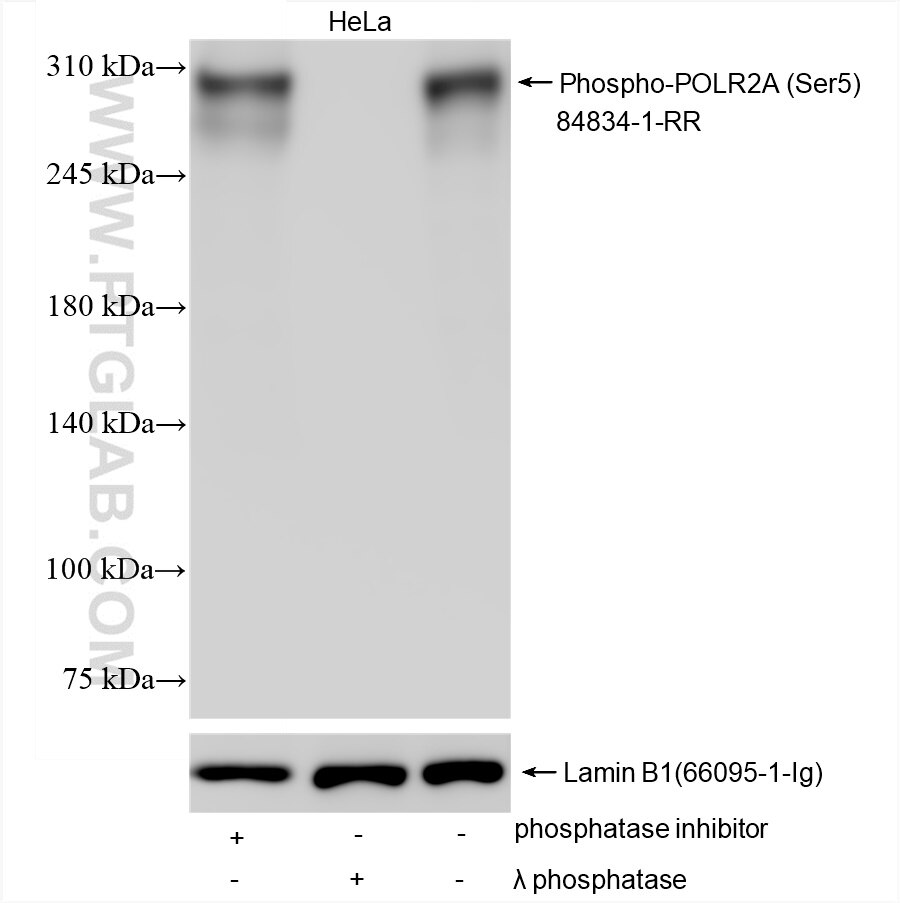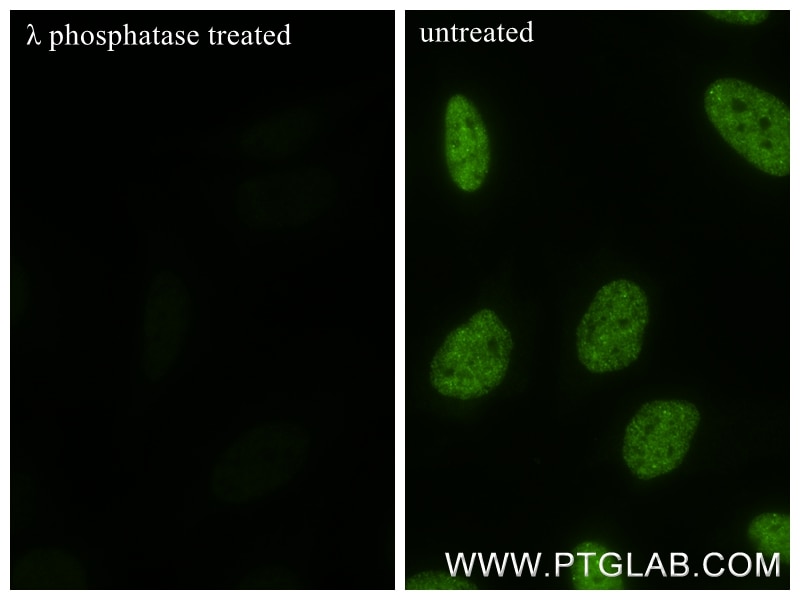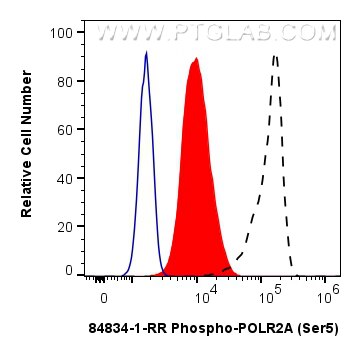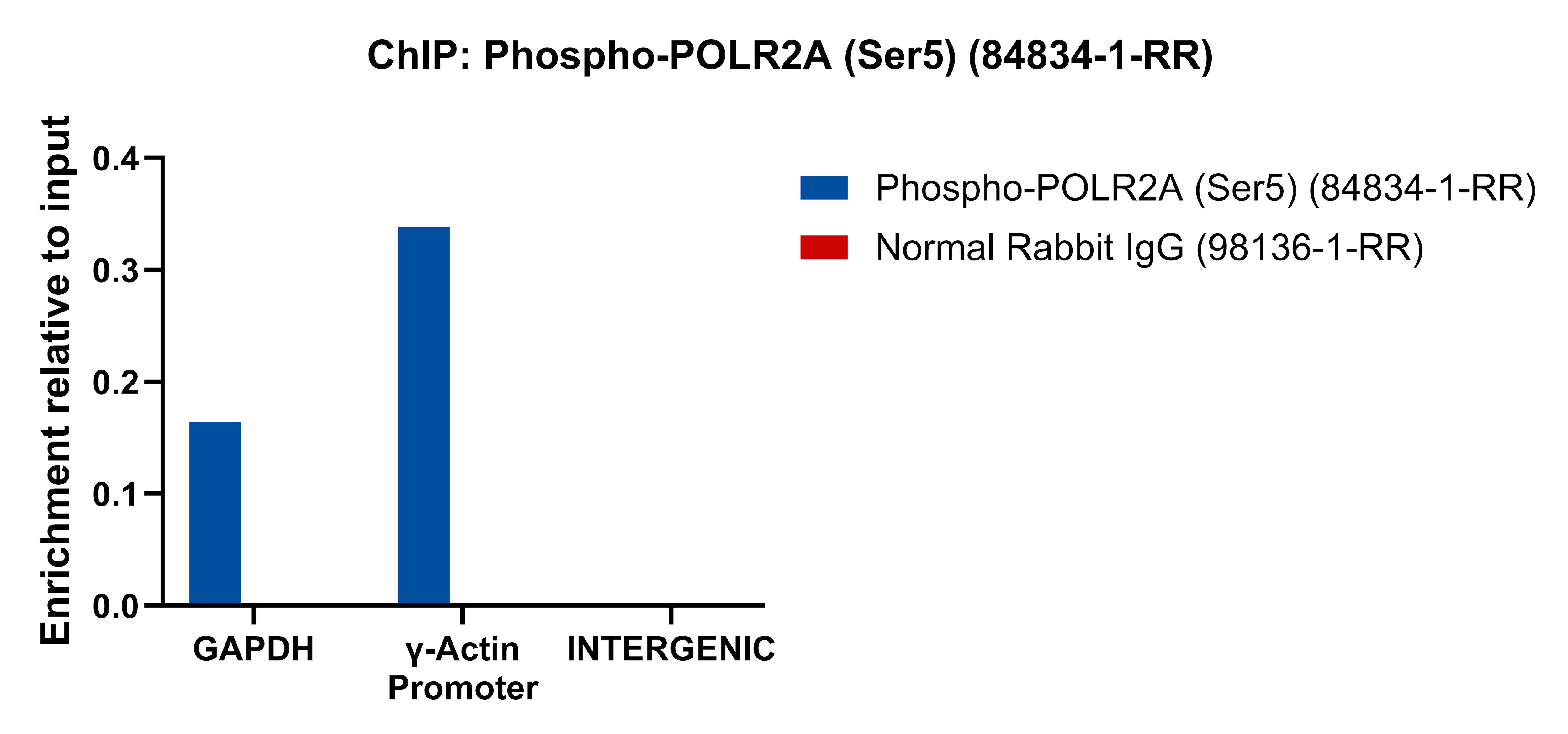Validation Data Gallery
Tested Applications
| Positive WB detected in | HeLa cells, λ phosphatase treated HeLa cells |
| Positive IF/ICC detected in | HeLa cells |
| Positive FC (Intra) detected in | λ phosphatase treated HeLa cells |
| Positive ChIP-qPCR detected in | HeLa cells |
Recommended dilution
| Application | Dilution |
|---|---|
| Western Blot (WB) | WB : 1:5000-1:50000 |
| Immunofluorescence (IF)/ICC | IF/ICC : 1:200-1:800 |
| Flow Cytometry (FC) (INTRA) | FC (INTRA) : 0.13 ug per 10^6 cells in a 100 µl suspension |
| CHIP-QPCR | CHIP-QPCR : 1:10-1:100 |
| It is recommended that this reagent should be titrated in each testing system to obtain optimal results. | |
| Sample-dependent, Check data in validation data gallery. | |
Product Information
84834-1-RR targets Phospho-POLR2A (Ser5) in WB, IF/ICC, FC (Intra), ELISA, ChIP-qPCR applications and shows reactivity with human samples.
| Tested Reactivity | human |
| Host / Isotype | Rabbit / IgG |
| Class | Recombinant |
| Type | Antibody |
| Immunogen |
Peptide 相同性解析による交差性が予測される生物種 |
| Full Name | polymerase (RNA) II (DNA directed) polypeptide A, 220kDa |
| Calculated molecular weight | 1970 aa, 217 kDa |
| Observed molecular weight | 270 kDa |
| GenBank accession number | BC137231 |
| Gene Symbol | POLR2A |
| Gene ID (NCBI) | 5430 |
| RRID | AB_3672142 |
| Conjugate | Unconjugated |
| Form | |
| Form | Liquid |
| Purification Method | Protein A purfication |
| UNIPROT ID | P24928 |
| Storage Buffer | PBS with 0.02% sodium azide and 50% glycerol{{ptg:BufferTemp}}7.3 |
| Storage Conditions | Store at -20°C. Stable for one year after shipment. Aliquoting is unnecessary for -20oC storage. |
Background Information
RNA Pol II consists of 12 subunits and is responsible for the expression of mRNA and lincRNA genes within cells. The subunits of RNA polymerases have been shown to play specific roles in Pol II CTD dephosphorylation, tissue-specific transcription, mRNA decay, and translation. Pol II transcription involves initiation through recruitment and CTD serine 5 phosphorylation, elongation with CTD serine 2 phosphorylation, and termination. (PMID: 38842922)
Protocols
| Product Specific Protocols | |
|---|---|
| IF protocol for Phospho-POLR2A (Ser5) antibody 84834-1-RR | Download protocol |
| WB protocol for Phospho-POLR2A (Ser5) antibody 84834-1-RR | Download protocol |
| Standard Protocols | |
|---|---|
| Click here to view our Standard Protocols |




